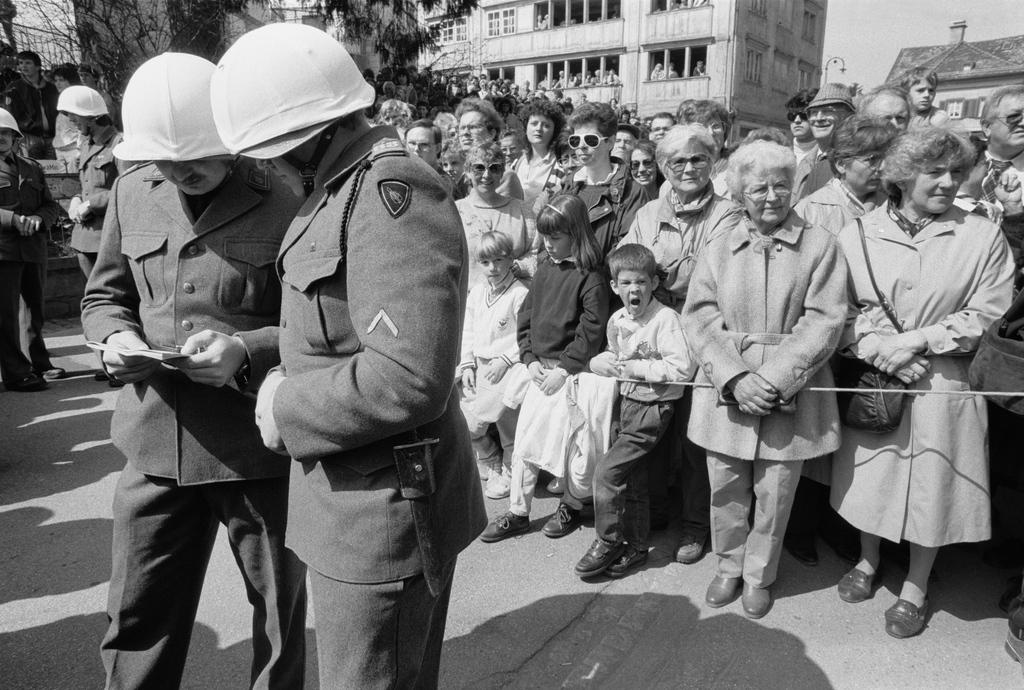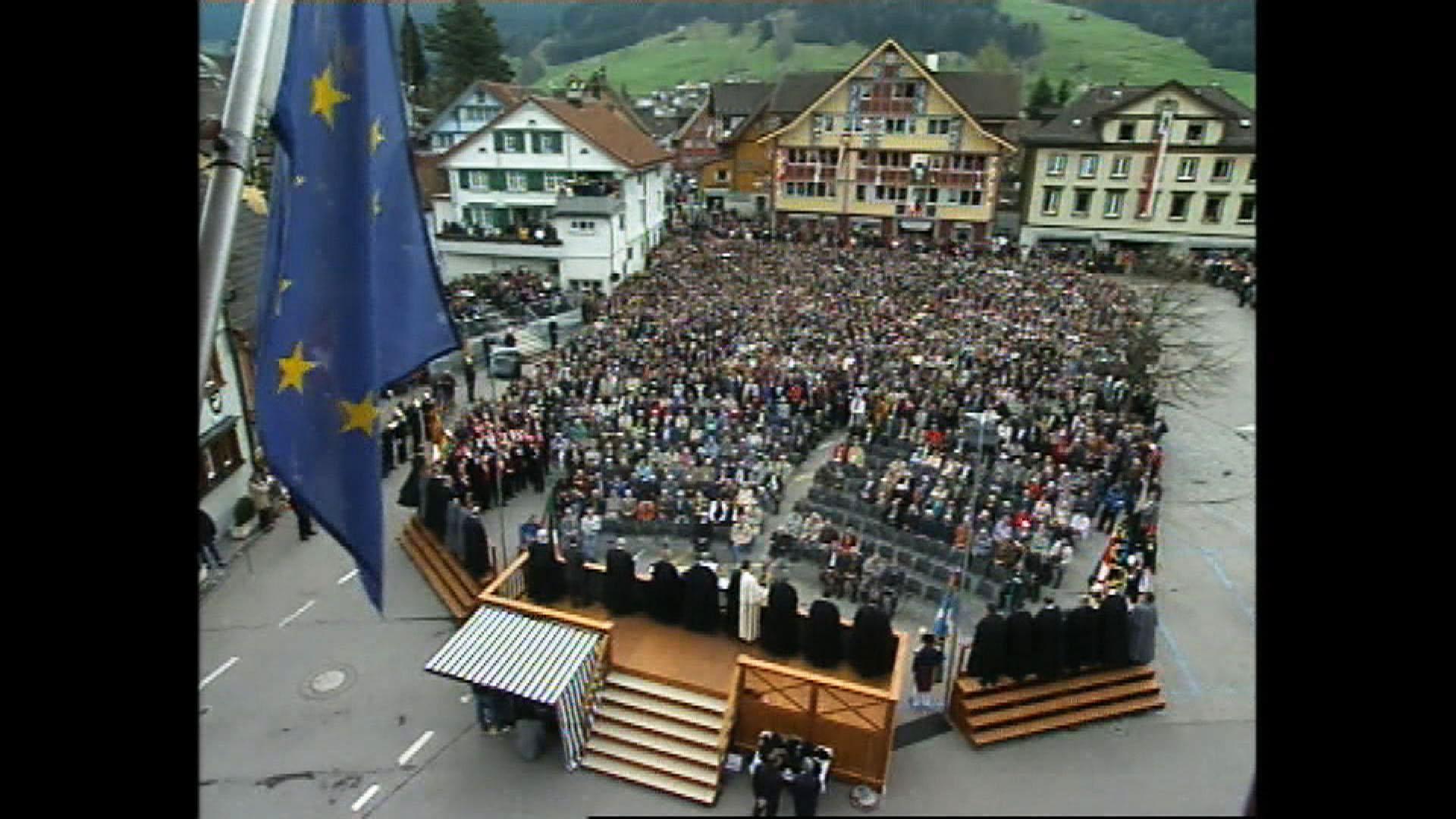
Appenzell Inner Rhoden women celebrate 25 years of the vote

Swiss gender equality took a big – and belated – step forward exactly 25 years ago, when women in Switzerland’s smallest canton were given the vote at a local and cantonal level, against the will of the local male population.
The men of Appenzell Inner Rhoden had denied their mothers, sisters and daughters the vote three times, in 1973, 1982 and April 1990. But in 1990 the women’s patience finally snapped. They brought a legal action before the Federal Court in Lausanne saying the situation was unconstitutional.
On November 27, 1990, the court agreed, overruling the canton. The last Swiss bastion of male-only voting had fallen (the men of neighbouring Appenzell Ausser Rhoden had narrowly voted to give women the vote in April 1989).
Inner Rhoden women could thus have their say on communal and cantonal issues, with immediate effect, almost 20 years after they had received the vote at a national level.

More
Ancient form of direct democracy
At the first “combined” cantonal vote on April 28, 1991, the mood among the men, who felt they had been cold-shouldered by the federal court, was less aggressive than feared.
“It wasn’t as heated as expected,” one witness told the Swiss News agency. “Those who opposed women voters were surprisingly calm. They seemed to accept it as a sort of sign from God.”
Total equality wasn’t immediate, however. While the men entered the public square holding a sword as their voting ID – even today Appenzell men wouldn’t dream of leaving their swords at home on voting day – the women had to make do with yellow voting cards. Apparently the authorities wanted to avoid at all costs “irrational women” entering the voting ring armed with a sabre.
Candidates
Women made history in April 1991 not only by turning up to vote but also by standing as candidates. Louise Dörig, a pioneer of women’s suffrage in Switzerland who died in 2013 aged 90, ran for a seat on the cantonal court but lost to the president of a district court, Werner Ebneter.
One year later, Käthi Kamber, supported by the women’s forum, became the first woman to be elected to the 13-head cantonal court. Currently there are four women judges and 14 female members of the 50-seat cantonal government.
However, women are still seriously underrepresented in Appenzell Inner Rhoden’s seven-person executive body: current member Antonia Fässler is only the second female member ever. The first, in 1996, was Ruth Metzler, who three years later was elected to the federal cabinet.
On February 7, 1971, 66% of Swiss men voted in favour of allowing women to vote at a federal level. The first opportunity came on June 6 of that year, when nationwide issues included environmental protection and financial regulations.
Although Switzerland was one of the last countries in Europe to give women the vote, it was the first to do so as a result of a male-only vote.
Most cantons followed the federal example. Some had even allowed women to vote at a cantonal level before 1971: Vaud and Neuchâtel were the first (1959), then Geneva (1960), Basel City (1966), Basel Country (1968) and Ticino (1969).
Eastern and central Switzerland were the most conservative. In the 1971 vote the following cantons were against giving women the vote: Appenzell Inner Rhoden, Appenzell Ausser Rhoden, Thurgau, Glarus, Schwyz, Obwalden and Uri.

In compliance with the JTI standards
More: SWI swissinfo.ch certified by the Journalism Trust Initiative
































You can find an overview of ongoing debates with our journalists here . Please join us!
If you want to start a conversation about a topic raised in this article or want to report factual errors, email us at english@swissinfo.ch.